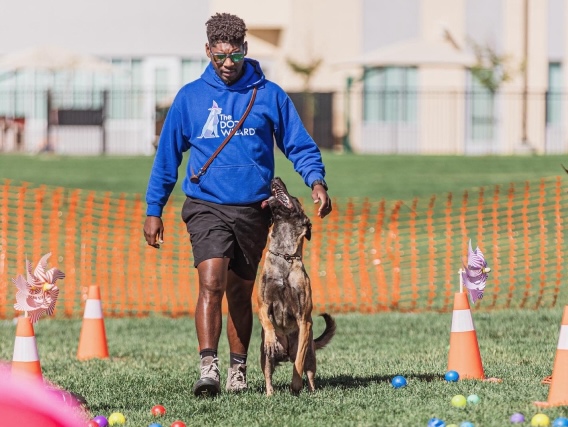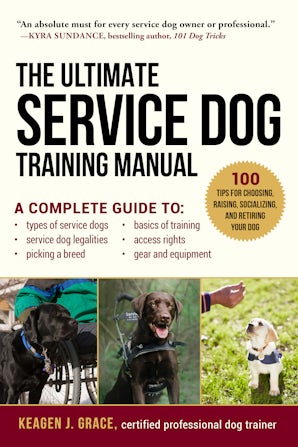Recognizing the Basics of Dog Training for First-Time Animal Owners
Recognizing the Basics of Dog Training for First-Time Animal Owners
Blog Article
Check Out the Different Types of Dog Training Available for Your Furry Buddy
Recognizing the different kinds of pet training is essential for enhancing your canine companion's behavior and promoting a more powerful bond. From fundamental obedience to advanced strategies such as dexterity and fragrance job, each training method offers one-of-a-kind advantages tailored to both the pet dog's and owner's demands. Furthermore, specialized programs address certain needs, such as those for service or treatment dogs. As you think about the ideal technique for your hairy close friend, it becomes evident that the choice of training can substantially influence your common experiences and results. What factors should you evaluate before devoting to a particular training style?
Standard Obedience Training
Basic obedience training lays the foundation for a mannerly pet, setting the stage for an unified relationship in between pet dog and owner. This crucial training concentrates on training pet dogs basic commands such as rest, stay, come, down, and heel. These commands not just improve communication yet likewise promote security in different settings.
The training procedure normally begins with favorable support methods, where rewards such as deals with or appreciation are used when the canine successfully adheres to a command. This method encourages a favorable understanding atmosphere, eventually promoting trust between the pet dog and the owner. Uniformity is vital; normal technique guarantees that the pet preserves commands over time.
Moreover, standard obedience training aids to deal with usual behavior problems, such as jumping, barking, or pulling on the leash. By developing clear boundaries and assumptions, proprietors can decrease undesirable actions and improve their pet's socialization skills.

Advanced Training Methods
Advanced training methods build on the fundamental skills established in fundamental obedience training, providing a path to boost a pet's capabilities and responsiveness. These strategies often entail specialized abilities and commands, allowing dogs to execute tasks that call for higher levels of concentration and knowledge.
One preferred method is dexterity training, where pets browse barrier training courses, boosting their physical sychronisation and psychological intensity. This not just offers exercise however additionally enhances the bond between pet and trainer with synergy and interaction.
Another sophisticated technique is scent job, which taps into a pet's natural olfactory capacities. This training motivates dogs to determine and situate specific aromas, improving their emphasis and analytical skills. Such tasks can be particularly helpful for breeds inclined to tracking.
Service pet training is another important location, where pets learn to assist people with specials needs. This training calls for a high level of obedience and specialized skills tailored to the specific needs of their trainers.
Behavior Alteration Techniques
Effective pet training extends past showing commands and abilities; it also includes behavior alteration approaches that deal with undesirable actions. These techniques are vital for fixing issues such as aggressiveness, excessive barking, and splitting up stress and anxiety, making certain a harmonious relationship between dogs and their proprietors.
One extensively identified approach declares reinforcement, which entails gratifying wanted behaviors to motivate their reoccurrence. This technique works in reinforcing good routines while minimizing worry or stress and anxiety in the canine. Alternatively, aversive strategies, such as penalty or negative support, are typically discouraged by experts because of their potential to develop concern and stress and anxiety, bring about further behavior problems.
One more vital method is desensitization, which progressively reveals dogs to the stimuli that provoke unwanted actions in a regulated fashion. This process helps dogs learn to stay tranquil and made up in scenarios that would commonly set off anxiousness or aggression.
Counter-conditioning is frequently used in conjunction with desensitization, where the pet dog discovers to connect favorable experiences with formerly negative stimuli. Both methods call for persistence and uniformity, making them effective tools for accomplishing long-lasting look at this website behavioral change. By utilizing these therapy techniques, family pet owners can foster a satisfied and well-adjusted canine buddy.
Specialized Training Programs
In the world of pet dog training, specialized training programs deal with specific demands and goals, offering tailored approaches that boost a pet's capabilities and address distinct challenges. These programs are designed for various objectives, including solution dog training, treatment canine preparation, and also affordable sports training.
Service pet dog training focuses on outfitting pets with the skills necessary to aid people with disabilities, such as assisting visually impaired owners or alerting to medical emergencies. This training is rigorous and usually calls for a combination of obedience, socialization, and specific task-oriented abilities.
Therapy pet programs aim to prepare pets this page for psychological assistance functions in hospitals, colleges, and assisted living facility. These pet dogs should show peace, sociability, and a gentle temperament, guaranteeing they can offer convenience to those in distress.
Additionally, competitive sports training, such as dexterity or obedience trials, emphasizes fitness, accuracy, and synergy in between the canine and trainer. These programs require a high level of dedication and practice, promoting a solid bond while developing the pet dog's athletic capacities.
Fun and Interactive Training Activities
Exactly how can pet dog training be both productive and delightful? The response hinges on integrating enjoyable and interactive training tasks that stimulate your pet dog's mind while enhancing vital abilities. Engaging your pet with play not only enhances the bond between you and your fuzzy friend but also boosts their understanding experience.
One reliable method to accomplish this is with dexterity training, where pets navigate barrier programs that challenge their physical and psychological capabilities. This activity motivates problem-solving and improves coordination, making it an excellent option for energetic breeds. An additional option is using challenge toys that dispense treats, which can keep your dog psychologically involved and inspired to find out.
In addition, incorporating video games like bring or hide-and-seek can make training sessions a lot more dynamic. These tasks urge the pet to react to commands in a fun context, promoting obedience while enabling social interaction.

Final Thought
In verdict, different sorts of dog training are important for boosting canine actions and promoting a solid human-animal bond. look these up Basic obedience functions as the foundation, while advanced methods, actions alteration, and specific programs attend to details demands. Involving activities further enrich the training experience, making sure that it stays pleasurable and beneficial for both dogs and their trainers. Checking out these diverse training choices gears up canine owners with the devices essential to grow well-shaped, delighted, and loyal companions.
Comprehending the different types of dog training is vital for improving your canine buddy's behavior and cultivating a more powerful bond. From standard obedience to sophisticated methods such as agility and scent work, each training approach uses special benefits customized to both the pet's and proprietor's needs.Standard obedience training lays the structure for a mannerly canine, establishing the phase for a harmonious relationship in between pet and proprietor.The training procedure commonly begins with favorable support methods, where incentives such as deals with or praise are used when the canine successfully follows a command.In verdict, different kinds of canine training are important for boosting canine actions and promoting a strong human-animal bond.
Report this page